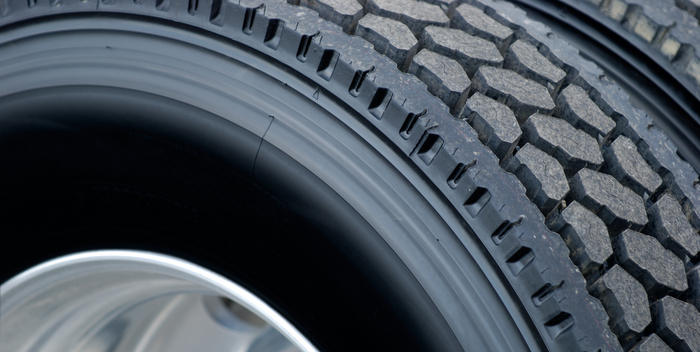If you’ve been an observant motorist for 20 years or more, you may remember when truck tires were noisy. Much has changed in recent years and one benefit of modern tire technology is that linehaul radials are now almost universally quiet—to the point that the noise generated by rolling down the interstate under load is benign with rare exceptions. Other trends, however, may change the role that tire noise plays in the total noise generation of future trucks.
Truck noise has traditionally been evaluated by two different test procedures; both using actual decibel measurements, typically outdoors, against a relatively quiet background in calm weather conditions. The first procedure, referred to as “power-on pass-by,” runs at steady state highway speed, emphasizing exhaust, cooling fan, turbo whine and related noise generated by the working drivetrain under a torque load on level ground. The second procedure, referred to as a “coast-by,” measured primarily tire and aero noise as the truck passed by microphones in a coast (neutral or clutch in) mode.
Sound levels generated by nearly all of the primary truck noise generating components have been reduced over the last two decades. Turbochargers and other post-exhaust treatment devices, along with cooling fan technology, have generally been credited with the biggest share of this reduction. Aero advancements have made significant contributions to enhanced fuel efficiency, while at the same time, reducing overall noise levels. Recently, cab designs, insulation, seating advancements and damping suspensions have added to noise reduction, as perceived by drivers.
Tire noise has benefitted greatly from the use of CAD programs that help predict sound levels at various load, speed conditions and on different road surfaces. In fact, some modern radials generate less noise than that same tire would if it had a completely smooth tread.
Therefore, tire designers must consider the type and aging characteristics of pavement surfaces for noise generation, similar to considerations for traction, when new tread patterns and rubber compounds are being evaluated. Some general guidelines are that drive tire patterns tend to be louder than straight rib designs common on steer and trail axles, and that concrete surfaces usually produce slightly louder tire noise than asphalt surfaces. There are, however, significant differences between newly poured, brushed surfaces and well-polished concrete. Interestingly, a tradeoff is that concrete surfaces tend to be slightly improved for fuel efficiency (tire rolling resistance) versus asphalt, although this difference is also influenced by the pavement underlayment.
Some current industry priorities may affect future tire noises. For example, tread depths for drive and steer axle tires may be reduced in an effort to improve fuel economy. Also, patterns that have more closed shoulders versus lugs, discontinuous blocks, especially on drive tires and simpler groove designs with increased siping, are all likely to become more popular in the quest to lower rolling resistance.
So, from a maintenance standpoint, what can be done to keep trucks as quiet as possible? Three things come to mind: First, spec the axle specific tires best suited for service conditions. Consult with tire manufacturer reps to validate selections, especially since many new tire models are currently becoming available.
Second, maintain inflation, alignment, tire/wheel assembly balance and wearing suspension components. Recent Type II testing shows a fuel economy advantage for trucks with all wheel positions balanced versus no balance. Therefore, balancing all wheel positions, even absent any vibration issues, may have a good payback for fuel saved, reduced irregular wear, extended take-off mileages and lower noise levels.
Third, make certain that your retread program uses only tread designs that minimize noise. This is becoming easier since many tire manufacturers are now in the retread business and new tire designs are typically followed shortly by tread patterns and compounds that duplicate original tread performance.














